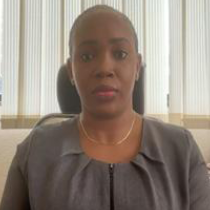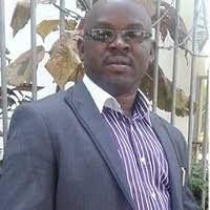International Journal of Wireless and Microwave Technologies (IJWMT)
IJWMT Vol. 15, No. 3, 8 Jun. 2025
Cover page and Table of Contents: PDF (size: 953KB)
3D mmWave MIMO Channel Modeling and Reconstruction for Street Canyon and High-rise Scenarios
PDF (953KB), PP.19-36
Views: 0 Downloads: 0
Author(s)
Index Terms
5G, mmWave Channel, Massive MIMO, 3D Channel Modeling, Channel Reconstruction
Abstract
The use of millimeter-wave (mmWave) and full-dimensional multiple-input multiple-output (FD-MIMO) antenna systems for 3D wireless communication is being exploited for enhanced network capacity improvement in the ongoing fifth-generation (5G) deployment. For adequate assessment of competing air interface, random access channelization, and beam alignment procedure in mmWave systems, adequate channel estimation and channel models for different use scenarios are necessary. Conventional pilot-based channel estimation methods are remarkably time-consuming as the number of users or antennas tends toward large numbers. Channel reconstruction has been identified as one of the solutions to the above problem. In this work, a ray-tracing study was conducted using a Wireless Insite ray tracing engine to predict measured statistics for large-scale channel parameters (LSPs). Other LSP such as the shadow fading (SF) were generated using algorithm 1. Algorithm 2 was used to generate the small-scale channel parameters (SSP). The LSPs and SSPs were used as input in algorithm 3 to generate the channel coefficients used for the channel reconstruction in the MATLAB LTE toolbox. The results provided an accurate reconstructed downlink channel state information (CSI) for FDD-based mmWave massive-MIMO system in both the line-of sight (LOS) and non-line of sight scenarios. The results provide an opportunity to adapt the transmitted signal to the CSI and thereby optimize the received signal for spatial multiplexing or to achieve low bit error rates in wireless communication.
Cite This Paper
Olabode Idowu-Bismark, Oluwadamilola Oshin, Emmanuel Adetiba, "3D mmWave MIMO Channel Modeling and Reconstruction for Street Canyon and High-rise Scenarios", International Journal of Wireless and Microwave Technologies(IJWMT), Vol.15, No.3, pp. 19-36, 2025. DOI:10.5815/ijwmt.2025.03.02
Reference
[1]Q. Nadeem, S. Member, and A. Kammoun, “Elevation Beamforming with Full Dimension MIMO Architectures in 5G Systems : A Tutorial,” pp. 1–31.
[2]Y. Li, X. Ji, D. Liang, and Y. Li, “Dynamic Beamforming for Three-Dimensional MIMO Technique in LTE-Advanced Networks,” vol. 2013, 2013.
[3]D. C. Araújo, T. Maksymyuk, A. L. F. de Almeida, T. Maciel, J. C. M. Mota, and M. Jo, “Massive MIMO: Survey and future research topics,” IET Commun., vol. 10, no. 15, pp. 1938–1946, 2016, doi: 10.1049/iet-com.2015.1091.
[4]S. Chen, T. Zhao, H. H. Chen, and W. Meng, “Network Densification and Path-Loss Models Versus UDN Performance - A Unified Approach,” IEEE Trans. Wirel. Commun., vol. 20, no. 7, pp. 4058–4071, 2021, doi: 10.1109/TWC.2021.3055549.
[5]R. Q. Shaddad, A. A. Saeed, R. Q. Naji, and A. M. Baalawi, “Hybrid Traffic Dispersion and Network Densification Scheme for 5G Millimeterwave Wireless Networks,” 2019 1st Int. Conf. Intell. Comput. Eng. Towar. Intell. Solut. Dev. Empower. our Soc. ICOICE 2019, pp. 1–6, 2019, doi: 10.1109/ICOICE48418.2019.9035153.
[6]O. Idowu-bismark and F. Idachaba, “5G Small Cell Backhaul : A Solution Based on GSM-Aided Hybrid Beamforming,” no. August, pp. 24–31, 2019, doi: 10.5815/ijcnis.2019.08.03.
[7]H. Ji, Y. Kim, J. Lee, and S. Electronics, “Overview of Full-Dimension MIMO in LTE-Advanced Pro Overview of Full-Dimension MIMO in LTE-Advanced Pro”.
[8]Q. Nadeem, S. Member, and A. Kammoun, “3D Massive MIMO Systems : Modeling and Performance Analysis,” vol. 14, no. 12, pp. 6926–6939, 2015.
[9]Y. Han, T. Hsu, C. Wen, K. Wong, and S. Jin, “Efficient Downlink Channel Reconstruction for FDD Multi-Antenna Systems,” pp. 1–23.
[10]G. Xu et al., “Full Dimension MIMO (FD-MIMO): Demonstrating Commercial Feasibility,” IEEE J. Sel. Areas Commun., vol. 35, no. 8, 2017, doi: 10.1109/JSAC.2017.2711150.
[11]M. Ozates, M. Kazemi, and T. M. Duman, “Channel Reconstruction Based Multiuser Precoding with Limited Feedback,” pp. 0–5, 2021, doi: 10.1109/BlackSeaCom52164.2021.9527824.
[12]C. Chang and D. W. Lin, “Interpolative Reconstruction of Millimeter Wave Mobile Channel Responses from Randomly Scattered Snapshots,” 2017.
[13]Q. Zhu et al., “Effects of Digital Map on the RT-based Channel Model for UAV mmWave Communications”.
[14]J. Kaleva, N. J. Myers, T. Antti, R. W. H. Jr, and U. Madhow, “Short Range 3D MIMO mmWave Channel Reconstruction via Geometry-aided AoA Estimation,” pp. 427–431, 2019.
[15]N. Prasad and X. F. Qi, “Channel Reconstruction in Intelligent Surface aided Communications,” vol. 2061, pp. 531–539.
[16]W. Ma et al., “Sparse Channel Estimation and Hybrid Precoding Using Deep Learning for Millimeter Wave Massive MIMO,” vol. 68, no. 5, pp. 2838–2849, 2020.
[17]O. B. Idowu-Bismark, A. E. Ibhaze, and A. A. Atayero, “Mimo Optimization Techniques and Their Application in Maximizing Throughput for 3GPP HSPA+,” J. Wirel. Netw. Commun., vol. 7, no. 1, pp. 1–8, 2017, doi: 10.5923/j.jwnc.20170701.01.
[18]S. A. Busari, K. M. S. Huq, S. Mumtaz, L. Dai, and J. Rodriguez, “Millimeter-Wave Massive MIMO Communication for Future Wireless Systems: A Survey,” IEEE Commun. Surv. Tutorials, vol. 20, no. 2, pp. 836–869, 2018, doi: 10.1109/COMST.2017.2787460.
[19]F. Boccardi, R. W. Heath, T. Marzetta, and P. Popovski, “Five Disruptive Technology Directions for 5G,” no. December 2013, 2014, doi: 10.1109/MCOM.2014.6736746.
[20]R. A. F. S. Perspective et al., “Accuracy Versus Complexity for mmWave,” IEEE Trans. Wirel. Commun., vol. 20, no. 12, pp. 7826–7841, 2021, doi: 10.1109/TWC.2021.3088349.
[21]O. Idowu-Bismark, O. Kennedy, R. Husbands, and M. Adedokun, “5G wireless communication network architecture and its key enabling technologies,” Int. Rev. Aerosp. Eng., vol. 12, no. 2, 2019, doi: 10.15866/irease.v12i2.15461.
[22]T. A. Thomas and H. C. Nguyen, “3D mmWave Channel Model Proposal,” 2014.
[23]Y. Zhang, J. Zhang, J. Zhang, G. Liu, Y. Zhang, and Y. Yao, “A Theoretical Analysis of Favorable Propagation on Massive MIMO Channels with Generalized Angle Distributions,” Electronics, vol. 11, no. 14, p. 2150, 2022, doi: 10.3390/electronics11142150.
[24]A. Tkac and V. Wieser, “Channel Estimation Using Measurement of Channel Impulse Response,” no. May, 2014, doi: 10.1109/ELEKTRO.2014.6847883.
[25]R. Zhang, X. Lu, J. Zhao, L. Cai, and J. Wang, “Measurement and modeling of angular spreads of three-dimensional urban street radio channels,” IEEE Trans. Veh. Technol., vol. 66, no. 5, pp. 3555–3570, 2017, doi: 10.1109/TVT.2016.2604394.
[26]L. Tian, J. Zhang, H. Tan, P. Tang, and G. Liu, “Propagation characteristics of elevation angles and three dimensional fading channel model with angle offset,” China Commun., vol. 16, no. 9, pp. 62–78, 2019, doi: 10.23919/JCC.2019.09.005.
[27]ITU-R, “M.2135 Guidelines for evaluation of radio interface technologies for IMT-Advanced,” vol. 1, 2009.
[28]Q. U. A. Nadeem, A. Kammoun, and M. S. Alouini, “Elevation Beamforming with Full Dimension MIMO Architectures in 5G Systems: A Tutorial,” IEEE Commun. Surv. Tutorials, vol. 21, no. 4, pp. 3238–3273, 2019, doi: 10.1109/COMST.2019.2930621.
[29]C. Seker, M. T. Guneser, and H. Arslan, “Millimeter-wave propagation modeling and characterization at 32 GHz in indoor office for 5G networks,” Int. J. RF Microw. Comput. Eng., vol. 30, no. 12, pp. 1–12, 2020, doi: 10.1002/mmce.22455.
[30]M. Kyrö, V. M. Kolmonen, and P. Vainikainen, “Experimental propagation channel characterization of mm-wave radio links in urban scenarios,” IEEE Antennas Wirel. Propag. Lett., vol. 11, pp. 865–868, 2012, doi: 10.1109/LAWP.2012.2210532.
[31]S. G. Larew, T. a Thomas, M. Cudak, and A. Ghosh, “Air interface design and ray tracing study for 5G millimeter wave communications,” 2013 IEEE Globecom Work. (GC Wkshps), pp. 117–122, 2013, doi: 10.1109/GLOCOMW.2013.6824972.
[32]G. R. Maccartney, T. S. Rappaport, M. K. Samimi, and S. Sun, “Millimeter-Wave Omnidirectional Path Loss Data for Small Cell 5G Channel Modeling,” IEEE Access, vol. 3, pp. 1573–1580, 2015, doi: 10.1109/ACCESS.2015.2465848.
[33]S. Hur et al., “Proposal on millimeter-wave channel modeling for 5G cellular system,” IEEE J. Sel. Top. Signal Process., vol. 10, no. 3, pp. 454–469, 2016, doi: 10.1109/JSTSP.2016.2527364.
[34]S. Ju, Y. Xing, O. Kanhere, and T. S. Rappaport, “Millimeter Wave and Sub-Terahertz Spatial Statistical Channel Model for an Indoor Office Building,” IEEE J. Sel. Areas Commun., vol. 39, no. 6, pp. 1561–1575, 2021, doi: 10.1109/JSAC.2021.3071844.
[35]S. K. Hinga and A. A. Atayero, “Deterministic 5G mmWave Large-Scale 3D Path Loss Model for Lagos Island, Nigeria,” IEEE Access, vol. 9, pp. 134270–134288, 2021, doi: 10.1109/ACCESS.2021.3114771.
[36]S. Zhdanov, N. Kadet, V. Silkov, M. Zirka, O. Rasstrygin, and A. Zirka, “The mathematical model for research of the UAV longitudinal moving,” Int. J. Comput. Netw. Inf. Secur., vol. 13, no. 5, pp. 29–39, 2021, doi: 10.5815/ijcnis.2021.05.03.
[37]H. Lee et al., “Downlink Channel Reconstruction for Spatial Multiplexing in Massive MIMO Systems,” pp. 1–12.
[38]Q. Gao, Z. Li, W. Zhang, X. Bao, J. Xia, and Z. Zheng, “Channel reconstruction for mmWave Massive MIMO systems based on Channel Path Map,” Phys. Commun., vol. 61, p. 102232, Dec. 2023, doi: 10.1016/J.PHYCOM.2023.102232.
[39]W. Fan, F. Zhang, Z. Wang, O. K. Jensen, and G. F. Pedersen, “On Angular Sampling Intervals for Reconstructing Wideband Channel Spatial Profiles in Directional Scanning Measurements,” vol. 9545, no. c, pp. 1–6, 2020, doi: 10.1109/TVT.2020.3030029.
[40]T. Specification, G. Radio, and A. Network, “3gpp tr 36.873,” vol. 0, no. Release 12, 2014.
[41]S. K. Hinga and A. A. Atayero, “Deterministic 5G mmWave Large-Scale,” IEEE Access, vol. PP, p. 1, 2021, doi: 10.1109/ACCESS.2021.3114771.
[42]T. S. Rappaport et al., “Millimeter wave mobile communications for 5G cellular: It will work!,” IEEE Access, vol. 1, pp. 335–349, 2013, doi: 10.1109/ACCESS.2013.2260813.
[43]Z. Yasser, “RMS Delay Spread and Path Loss Dependency for Mobile Outdoor UWB Channels,” 2018 Int. Conf. Adv. Sci. Eng., pp. 206–211, 2018.
[44]O. Idowu-Bismark, F. Idachaba, A. A. Atayero, W. Janusz, and C. Harling, “RMS Delay Spread and Channel Capacity Modelling for 28 GHz MIMO Channel with Different UE Height,” Lect. Notes Networks Syst., vol. 286, pp. 663–671, 2022, doi: 10.1007/978-981-16-4016-2_63.
[45]X. Y. Wang, B. Li, X. Yuan, J. W. Dou, and Y. Li, “Elevation angle research in three-dimension channel model using ray-tracing,” 2014 31th URSI Gen. Assem. Sci. Symp. URSI GASS 2014, no. i, pp. 3–6, 2014, doi: 10.1109/URSIGASS.2014.6929281.
[46]P. F. M. Smulders and L. M. Correia, “Characterisation of propagation in 60 GHz radio channels,” Electron. Commun. Eng. J., vol. 9, no. 2, pp. 73–80, 1997, doi: 10.1049/ecej:19970204.
[47]R. N. Almesaeed, A. S. Ameen, E. Mellios, A. Doufexi, and A. Nix, “3D channel models: Principles, characteristics, and system implications,” IEEE Commun. Mag., vol. 55, no. 4, pp. 152–159, 2017, doi: 10.1109/MCOM.2017.1500505.
[48]O. Idowu-Bismark, F. Idachaba, and A. A. Atayero, “Large-scale parameter modelling for millimeter-wave multiple-input multiple-output channel in 5G ultra-dense network,” Indones. J. Electr. Eng. Comput. Sci., vol. 26, no. 2, pp. 794–807, 2022, doi: 10.11591/ijeecs.v26.i2.pp794-807.
[49]“R1-132988 Proposals for 3D MIMO Channel Modelling in UMi_final.”
[50]R. Zhang, X. Lu, W. Duan, L. Cai, and J. Wang, “Elevation domain channel measurement and modeling for FD-MIMO with different UE height,” 2015 IEEE Wirel. Commun. Netw. Conf. WCNC 2015, no. Wcnc, pp. 70–75, 2015, doi: 10.1109/WCNC.2015.7127447.


